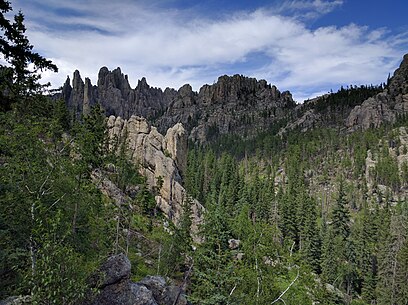Introduction
Dome mountains have a rounded shape and form when magma pushes up the Earth’s crust without breaking through. This process creates a gentle, dome-like elevation. While not as tall or steep as some other mountains, they have a unique geological shape. Dome Mountains can also be found in many locations not just along fault lines like fold mountains.
Step by Step formation of Dome Mountains

- Gradual Rise of Molten Rock:
- In the initial phase of dome mountain formation, magma slowly moves toward the Earth’s surface.
- Elevation Effected: Subtle Forces at Play:
- As magma approaches, it starts a small interaction with the surrounding rocks, prompting them to elevate without a dramatic breakthrough. The uplifting process is characterized by a gradual and controlled rise.
- Dome Configuration: Nature’s Artistry Unveiled:
- Under the sustained pressure of the rising magma, the rocks undergo a transformation, adopting a rounded or dome-like configuration.
- Eruption Absent: Dormancy with Deliberation:
- In contrast to the explosive eruptions associated with volcanic mountains, dome formations embody a state of dormancy. The magma, as it shapes the landscape, refrains from forceful eruptions.
- Erosional Revelation: Nature’s Patient Unveiling:
- Over time, nature takes centre stage, eroding the mountain with wind, water, and other erosional agents.
Occurrences
Dome mountains can form in various geological settings, and they are not strictly tied to specific plate boundaries. Unlike some other types of mountains linked with tectonic activity, dome mountains can emerge in continental interiors away from plate boundaries. They often result from the uplifting of rocks due to the intrusion of magma beneath the Earth’s surface.
Examples of Dome Mountains

The Black Hills in South Dakota, USA, exemplify the characteristics of a dome mountain, created through the gradual ascent of molten rock beneath the Earth’s surface. These hills showcase a distinct rounded shape, a consequence of magma’s upward movement without explosive eruptions. Over time, erosion has meticulously revealed the unique dome-like features inherent to the Black Hills. This geological phenomenon serves as an eloquent testament to the Earth’s transformative processes, where patient and intricate forces have sculpted a landscape of enduring beauty.

